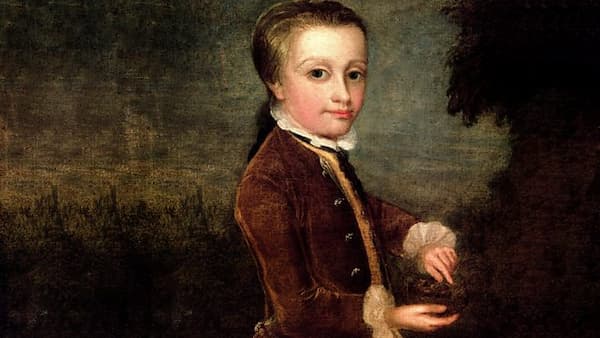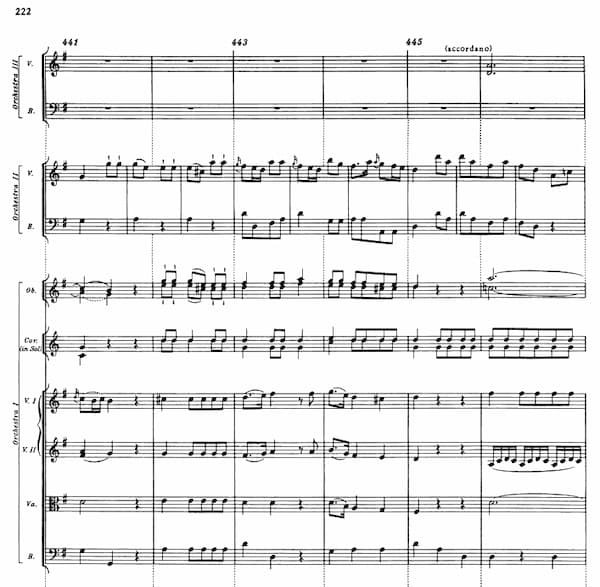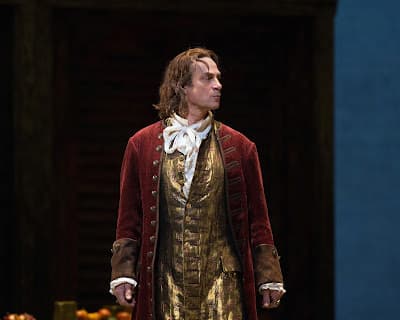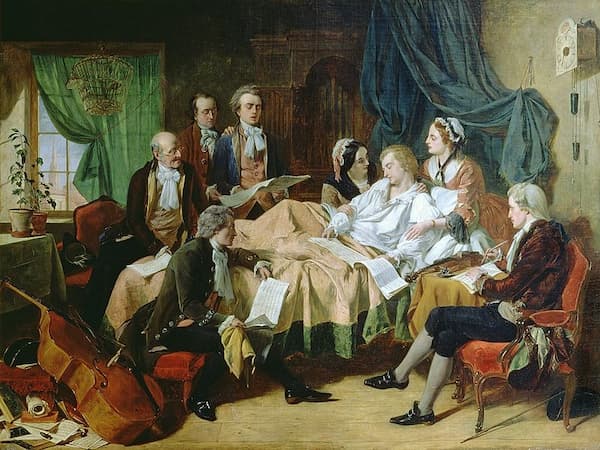When Wolfgang Amadeus Mozart (1756–1791) wrote his first quodlibet (a work that combines popular melodies of the day) at age 10, it was designed to show off both his keyboard skills and knowledge of music, a later quodlibet had a more political purpose.

The Young Mozart
In the opera Don Giovanni, there’s a party scene at the end of Act I. Don Giovanni is in active pursuit of the newly engaged Zerlina, Leporello is keeping Masetto, her fiancé, distracted, and the three collaborators, Donna Anna, Donna Elvira, and Don Ottavio are present, but their faces are hidden in masks.
Don Giovanni sings a dangerous lyric for the time, “Long Live Liberty”, but as in so many things, he means only liberty for himself, the libertine and not the world in general. Also in the ballroom are three separate chamber orchestras.
Don Giovanni calls for music, and the first orchestra starts, playing a minuet in ¾ time. The second orchestra first checks their tuning. plays a contradance in 2/4 time. The third orchestra, again opening with a tuning check, plays a German dance in 2/8 time.
This all comes to an end when Zerlina screams for help.
Mozart’s Don Giovanni – Finale I (Vienna State Opera, 1999)
In this production by the Vienna State Opera, you can see all the orchestras on stage. Orchestra 1, which is the largest, consists of strings and winds; the other two orchestras are strings only.
It will take a couple of listens to hear what’s going on behind the singing. The real trick is that Mozart is combining three orchestras, in three different time systems, into one whole and then placing that against the regular music of the opera.
Here’s an image of part of the score.

Mozart: Don Giovanni, Act I, Scene 5 music score
The bottom orchestra (Orchestra I) plays in ¾ time. Orchestra II in the middle is in 2/4 time and only matches up with Orchestra I in every other measure. For every two measures that Orchestra I plays, Orchestra II plays 3. Orchestra III, on the top, is in 3/8 time. It matches up with Orchestra I and not with Orchestra II.

Baritone Lucia Lucas as Don Giovanni with one of the masked guests, 2019 (Tulsa Opera) (Photo by Shane Bevel Photography)
The three orchestras also play three different styles: an upper-class minuet, a middle-class contradance, and a lower-class peasant’s dance. In the score, the three masked (upper class) characters start to dance with the minuet. Leporello (arguably middle class) starts to make Masetto dance at the entrance of Orchestra II and succeeds when Orchestra III enters. This subtlety is often lost in stage settings but is what Mozart wrote in the score.
To precede this with Don Giovanni’s call for Liberty is ironic, as he will follow that call with a separation of the classes by their music.
Wolfgang Amadeus Mozart: Don Giovanni, K. 527 – Act I Scene 20: Riposate, vezzose ragazze (Kathleen Battle, Zerlina; Anna Tomowa-Sintow, Donna Anna; Agnes Baltsa, Donna Elvira; Gösta Winbergh, Don Ottavio; Samuel Ramey, Don Giovanni; Ferruccio Furlanetto, Leporello; Alexander Malta, Masetto; Berlin Philharmonic Orchestra; Herbert von Karajan, cond.)
Mozart also made the three orchestras play against each other by writing in harmonic mistakes that would only be revealed when all three orchestras played together. When Orchestra III plays D harmonies, Orchestra II might set E harmonies against it. Each Orchestra is, in itself, playing perfectly, but the other Orchestras are fighting it with their harmonies, each Orchestra secure in the notion that their lines are sensible.

Simon Keenlyside as Don Giovanni, 2017
At the end of Don Giovanni, there is another onstage orchestra that’s playing for the fatal dinner party where the Commendatore will make his appearance. For the dinner guest’s entertainment, the orchestra plays arias from popular operas the audience would have been familiar with. “O quanto un sì bel giubilo” from Vicente Martín y Soler’s Una cosa rara (1786), “Come un agnello” from Giuseppe Sarti’s Fra i due litiganti il terzo gode (1782), and finally “Non più andrai” from The Marriage of Figaro (1786).
Wolfgang Amadeus Mozart: Don Giovanni, K. 527 – Act II Scene 13: Finale: Gia la mensa e preparata (Samuel Ramey, Don Giovanni; Ferruccio Furlanetto, Leporello; Berlin Philharmonic Orchestra; Herbert von Karajan, cond.)
As they play, Leporello identifies the first 2 operas, commenting on the last one that it’s ‘all too familiar’, an inside joke for the singer (and for those in the know in the audience) since the first Leporello, Felice Ponziani, had also sung Figaro in the same theatre earlier. The choice of music was deliberate, showing insipid examples from his rival before putting in his own brilliant aria. This isn’t a quodlibet, but it is another way that Mozart was showing off not only his own knowledge of the popular arias of the day but also his own superiority.

Henry Nelson O’Neil: The Last Hours of Mozart, 1860s
As Mozart’s final opera, Don Giovanni stands for all the cleverness, musical knowledge, and knowledge of human affairs that we credit Mozart with having and putting into his music.
For more of the best in classical music, sign up for our E-Newsletter
